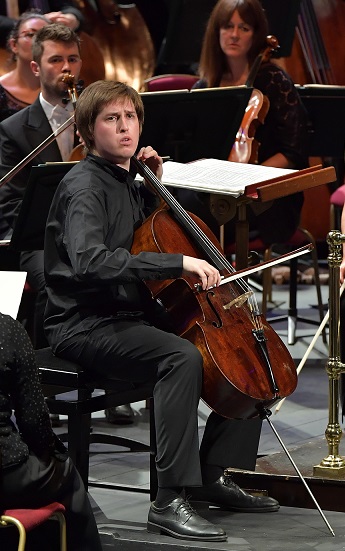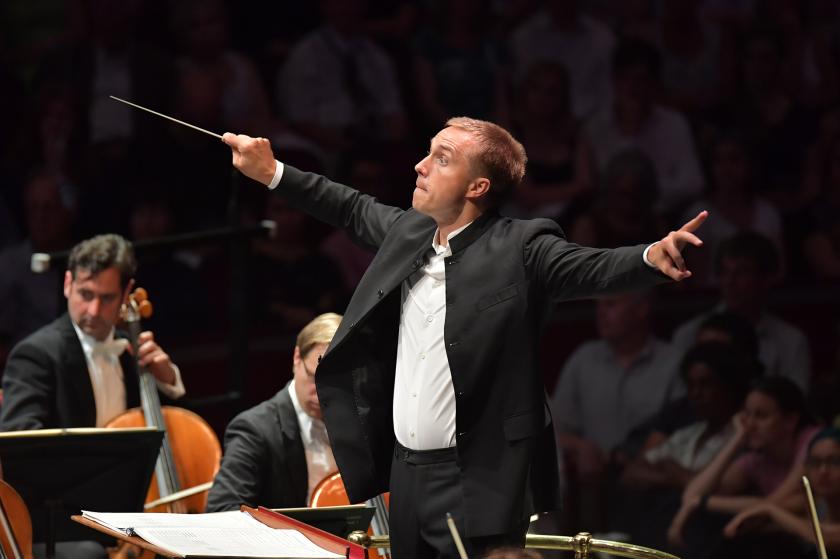He still looks every inch the golden boy, but Vasily Petrenko has just turned 40, and next month celebrates a decade with the Royal Liverpool Philharmonic. Time well spent, as this impressive evening revealed: after years of Russian immersion under his crisp command, here’s a band who can conjure Shostakovich’s smoudering darkness, and all the glitter and the grit in Rachmaninov’s third symphony.
If the concert belonged to Petrenko, it was probably the promise of Truls Mørk playing Shostakovich’s first cello concerto that had packed the hall. Young Russian Alexey Stadler (pictured below) had the unenviable task of replacing him due to last-minute illness. With a bright sound of remarkable heft and carrying power, he was more than equal to the task, launching into a swift Allegretto with curt staccato strokes while Petrenko drew edgy authority from the orchestra.
Howard's is a voice of undeniable poise and power
Stadler brought a powerful rhythmic drive, but in moments of repose lacked elasticity. In the sombre Moderato, we missed a sense of dreamy caprice when a circus band seems to drift past. His long cadenza was well-judged, at times daringly inward, but where Mørk can find a sense of agony, Stadler’s meditation was strangely passive: there was more soul to be found in the luminous horn solos of Timothy Jackson. Stadler excelled in the finger-shredding finale, while sparks flew in the orchestra. His encore, the Sarabande from Bach’s Suite No. 2 in D minor, was a gift quietly given. A young man to watch.

A suspension of string sound on the edge of silence filtered into the auditorium, slithering through pitches under the spectral chatter of cymbals and gongs, bowed and scatched. Howard has already established a distinct identity in her orchestral works: strings often move as one seething body, while volleys of brass and wind operate in another dimension. At some point the more traditional idea of a concerto for orchestra seemed to return, recalling Bartók’s own virtuoso finale, with strings suddenly fizzing under a barrage of wailing brass, whose mournful, alien sound seemed to encapsulate the baleful character of this work. This felt over-long, but Howard's is a voice of undeniable poise and power.
Petrenko kindled Rachmaninov’s third symphony into life with deft skill. Written in 1935 for the Philadelphia Orchestra under Stokowski, it’s a work that brilliantly acknowledges America, while mourning Russia. Petrenko balanced volatility and ardour: the first movement flickered, while solemn chorales and melodies were given space to breathe. Liverpool’s violas brought a special honeyed richness to the centre of the string sound, while leader Thelma Handy's solos shone: only in the great climax of the Adagio could the tonal head-rush have been more intense. Every line of restless contrapuntal invention was clear in an exciting finale.














Add comment